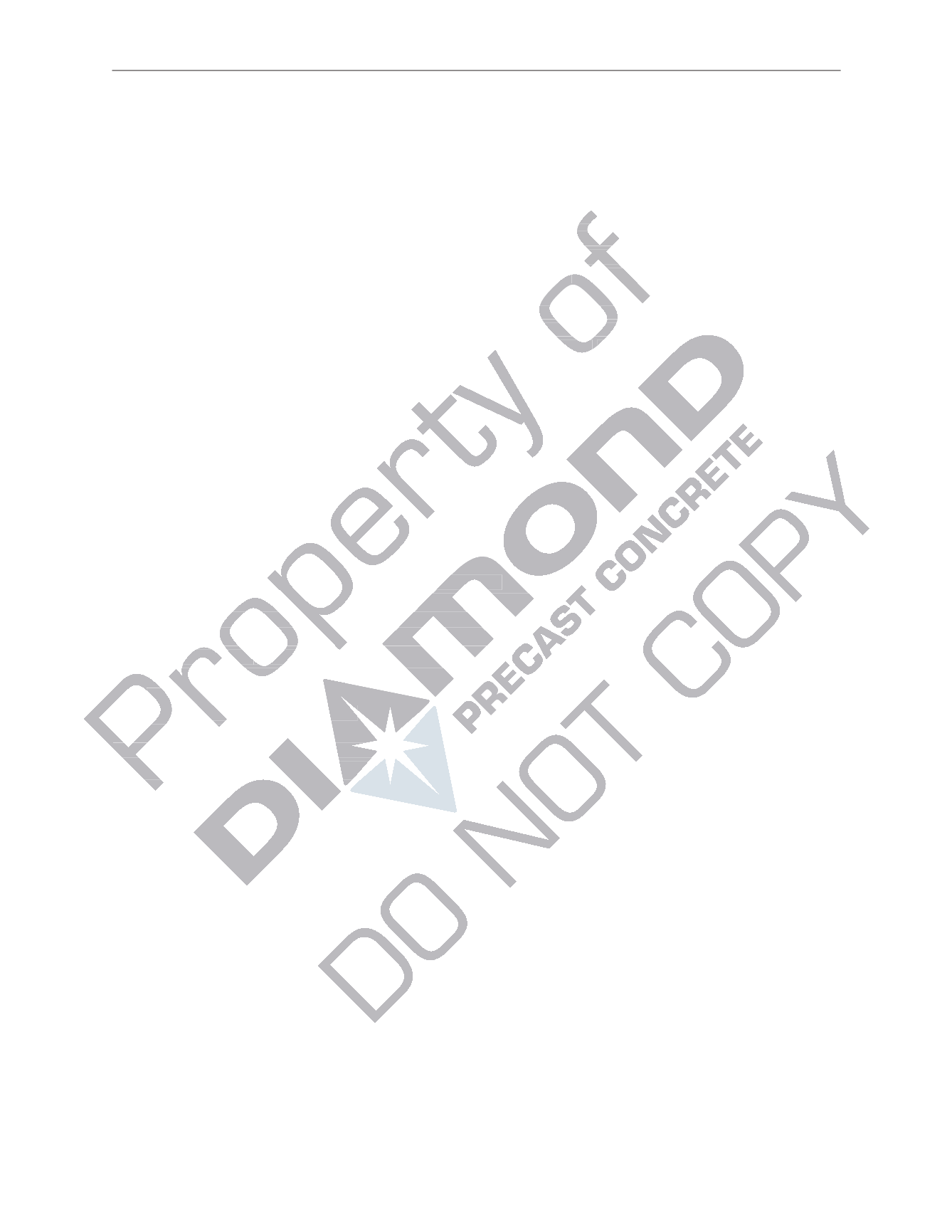

A23.4-09
©
Canadian Standards Association
November 2009
28.2.5.7.2
Final stressing shall be accomplished by one or more of the following methods:
(a) Deflection of stressed tendons: in order to distribute friction and restraint forces at tendon deflection
points, tendon lifting and depressing shall be carried out either simultaneously or consecutively,
commencing at the centre of the bed and progressing alternately at points equidistant from the
centre to the end.
(b) Stressing in draped position: tendons shall be stressed to final value in their draped position for the
full length, from either one or both ends of the bed. The tendons shall pass over pin and roller fixtures
that effectively minimize friction at all deflection points. Support and hold-down devices shall be of
sufficient rigidity and adequate support that the position of tendons will remain substantially
unchanged under the induced loads.
Note:
If elongation is not obtained within the required tolerance, the tendon may be temporarily overstressed to overcome
friction. Overstress should not exceed 80% of the specified tensile strength. Although the stress should not exceed 80% of the
specified tensile strength, consideration should be given to lowering the stress due to the undetermined friction buildup and
localized bending stress in the draped tendons, especially where tendon drape exceeds a slope of 1 to 6. See PCI MNL-116.
28.2.5.8 Recording of stressing operations
28.2.5.8.1
Prestress force and elongations shall be checked and recorded during the stressing operations.
28.2.5.8.2
Stressing records shall include the following information applicable to the particular operation:
(a) date of tensioning;
(b) casting bed identification;
(c) description, identification, and number of elements;
(d) manufacturer, size, type, and ultimate strength of tendon;
(e) sequence of stressing (and detensioning, if critical);
(f) straight or draped tendons (possible compensations and possible stressing from either end);
(g) identification of jacking equipment;
(h) corrections for tendon slippage (including splices), anticipated abutment movement, thermal effects,
etc.;
(i) required total load per tendon;
(j) initial tension;
(k) anticipated pressure for each tendon or for each group of tendons stressed in one operation;
(l) anticipated elongation for each different jacking load;
(m) actual elongation or actual force measurement, depending on which operation is chosen for checking
(see
Clause 28.2.5.1.2
);
(n) for stressing of draped tendons:
(i) sequence; and
(ii) data and description; and
(o) any unanticipated problems encountered during tensioning (e.g., wire breakage, excessive slippage,
restressing, or other factors that can have an influence on the net stress).
28.2.5.9 Debonded tendons
Bond breakers shall not alter the physical or chemical properties of the tendons or surrounding concrete.
Grease or oil shall not be used.
28.2.5.10 Tendon splices
28.2.5.10.1
Tendon splices shall comply with the same requirements as tendon anchors (see
Clause 10.2.4
).
Licensed for/Autorisé à Jed Friesen Sold by/vendu par CSA on/le June/18/2015.
~Single user license only. Storage, distribution or use on network prohibited. Permis d'utilisateur simple seulement.
Le stockage, la distribution ou l'utilisation sur le réseau est interdit.
















